

We have a large collection of Dahlias in the garden mostly in the Walled Garden and The Dell but there are also bedding displays in the Yew Garden and the Sunken Garden. Clicking on any picture or name gives more details of the plant and where it can be found in the garden.
There are a number of different varieties of Dahlias being trialed by the greenhouses in the walled garden and selections may be made from these for use in the garden in future years.
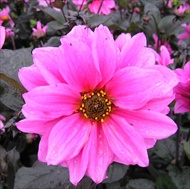
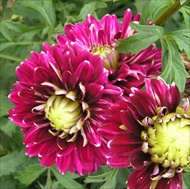
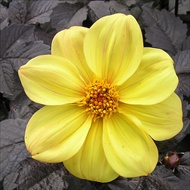
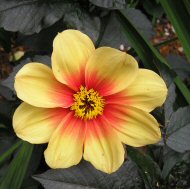


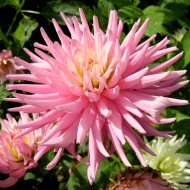
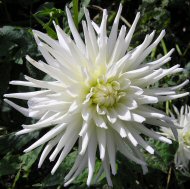

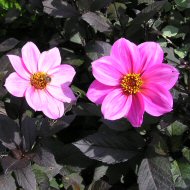

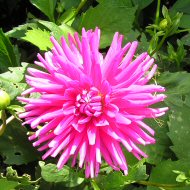
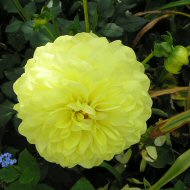





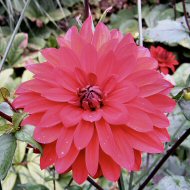
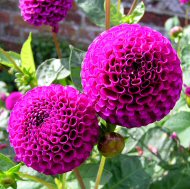




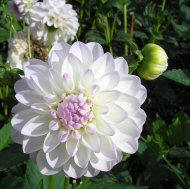



Dahlias are quick-growing, heat-loving plants that produce abundant flowers on strong stems. There are hundreds of varieties with flowers in a wide range of sizes, colors, and shapes.
Select a site with full sun, although they will tolerate light shade, and well-drained soil. Tall and large-flowered varieties should be sheltered from strong winds. Dahlias adapt well to growing in containers.
Dahlias should be planted as tubers in spring after all danger of frost has passed and the soil has warmed. Prepare the garden bed by using a garden fork to loosen the soil to a depth of 12 to 15 inches, then mix in a 2 to 4inch layer of compost. Dig a hole about three times as deep as the diameter of the tuber, usually between 3 and 8 inches. Set the tuber horizontally in the hole with the buds facing up, cover it with soil, and press firmly. Space tubers 1 to 3 feet apart, depending on the variety, and water thoroughly. Stake tall varieties at planting time, being careful not to damage tubers when installing stakes.
Apply a thick layer of mulch to retain moisture and control weeds. To reduce the height of tall-growing varieties, pinch back shoots when the plant is about a foot tall. Dahlias prefer consistently moist soil, so water plants during the summer if rainfall is low, and water container-grown plants frequently to keep soil moist but not saturated. Remove flowers as they fade. In autumn, after frost kills the foliage, cut plants back to a few inches in height. Wait a few days so that tubers can cure, then carefully lift clumps, brush off any clinging soil, and put them in a box filled with perlite or peat moss, spacing them so that none are touching. Store boxes off the floor in a dry frost free area. Replant in the spring, dividing large clumps into sections each containing one or more buds, which appear as small bumps.